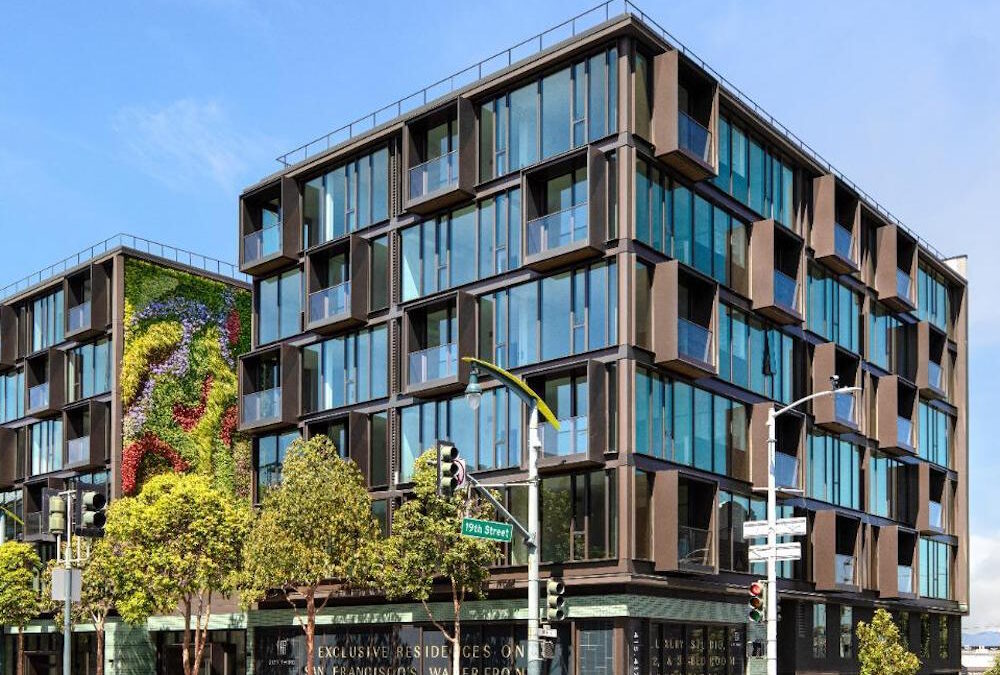No property type in San Francisco is more misunderstood than the Tenancy In Common (TIC). Many real estate agents, in fact, have only a very basic knowledge of what they are and how they operate — much less the average home buyer.
We are often asked how TICs are different than condos. Why do they exist? Are they risky? Can they be financed? Do they make good investments? Here, we have the answers.
hey, home buyer
Winning in a real estate market as dynamic as San Francisco’s calls for hyperlocal expertise. We earn our clients' business every time. No pressure, just experience.
Tap that icon to the right. Let's talk.
Disclaimer: San Francisco home buyers should always seek the counsel of qualified professionals including attorneys, wealth managers and municipal authorities before making any decision to purchase or lease real property. Laws regulating condo conversion, tenancy and other matters related to TIC ownership are constantly changing. The information below is considered reliable at the time of publication, but is not guaranteed and is subject to change without notice. The following real estate broker insights should be considered a resource for home buyers, and no legal or financial advice shall be construed.
Formation
Any new or existing multi-unit or mixed-use property in San Francisco may be structured TICs. The task may be accomplished with a private (not recorded with the city/county) Tenancy In Common Agreement (TICA), written by a local real estate attorney well-versed in the subject, ideally. This document details the terms and conditions of parties as co-owners of a property including the allocation of costs, obligations, benefits and rights associated with its ownership. In essence, it functions the same as the Covenants, Conditions & Restrictions do in condominium developments. The key unique component of the TICA is the specification of co-ownership interest percentages and granting each co-owner the exclusive right to occupy certain areas of the property. Because it is a private document, it may be modified with ease provided agreement among parties.
An Investment Strategy
The owner of a multi-unit property is able to put a TICA in place and subsequently sell an ownership interest in the property, perfecting the TIC arrangement by creating co-ownership. In smaller buildings, this can be an effective way for the original co-owner to immediately put money back in the bank and, perhaps, move toward value-add condo-conversion (discussed below). An investor who purchases a larger building may choose to renovate the apartments and sell them off as TICs to turn a profit. This latter strategy may be a longer-term play, especially if there are tenants in some or all of the apartments — but, generally, the larger the building the lower the average price per door, and thus the larger the potential profit.
Co-Ownership
TICs are not like condominiums where each owner holds title to property which includes their legally described unit and some percentage interest in common areas. They instead are ownership interests in an undivided multi-unit property — having one title — with the right to exclusively occupy assigned spaces described in the TICA. The percentage of any given interest may be proportionate to the square footage of its associated unit and appurtenant areas such as decks, storage rooms and parking — but this is not always the case. TIC groups where each co-owner’s assigned space is more-or-less the same size will often have equal interests adding up to 100 percent despite relatively minor variances. Furthermore, interests may be redefined if one or more co-owners’ assigned space is enlarged or reduced. Less common is an allocation of interests based on purchase prices, as the TICA that defines those percentages is typically in place prior to marketing property for sale.
Home Owner Association
The day-to-day operation of a TIC association is practically identical to that of condominium communities. The TICA governs permissible activities, decision-making and management, dispute resolution, etc. Excepting informal arrangements where co-owners may adopt a pay-as-you go system — usually in smaller associations — monthly dues for maintenance, common utilities, reserves and the like paid into a dedicated account and a budget is kept. Periodic meetings are held by members to discuss and vote on matters affecting the association and property.
Property Taxes
Given that there is one parcel number for the TIC building, its entire tax burden is the responsibility of co-owners to divide amongst themselves and pay. Each owner’s liability may be calculated as the percentage of their individual basis — what they paid for their interest plus any amount by which the assessed value of the property is increased by their individual improvements or by a non-sale transfer — relative to the total tax basis of all co-owners. This method ensures that tax burden continues to be allocated fairly as interests are transferred and/or redefined. To reduce the risk that one or more co-owners falls behind on their owed taxes, a well-written TICA stipulates that each co-owner’s share shall be collected monthly and the amount immediately adjusted upon any event likely to trigger reassessment.
Financing
There was a time when the only mortgage product available to co-owners was a group loan. Under this arrangement, all owners bore the risk of financial woes and foreclosure on the entire property if one defaulted on their part. The lasting idea that TIC ownership is especially high-risk and ought to be avoided is perhaps most attributed to this — but group loans are a thing of the past. But, today, almost all TIC purchases in San Francisco are made with fractional financing. Each co-owner solely qualifies and is responsible for their own loan, which is secured by their individual TICA-defined co-ownership interest — just like the borrower on a condominium where payment liability and consequences land entirely on its owner.
It’s important to note that only select lenders offer fractional financing: Bank of San Francisco, Sterling Bank & Trust, Redwood Credit Union, Patelco Credit Union, National Cooperative Bank and Bank of Marin are among them. Fractional financing products have historically taken the shape of adjustable-rate mortgages, however 15-year and 30-year fixed-rate options are now available. The minimum required down payment is typically 20 to 25 percent.
Tenancy
Because a TIC unit is part of an undivided multi-unit property, it is subject to San Francisco rent control regulation if the building’s certificate of occupancy was issued prior to 13 June 1979. Newer units may fall under statewide rent control law AB 1482. A TIC tenancy for 30+ days is additionally subject to local eviction protections and may be terminated only for just cause or an owner move-in (OMI). Note: Only one OMI is allowed in any multi-unit building — and, so, a co-owner’s ability to recover possession of their tenant-occupied unit may be impossible if it’s been done by another co-owner; the unit where an OMI takes place is the designated owner’s unit into perpetuity. Generally speaking, as San Francisco’s laws increasingly bend in favor of tenants, homeowners planning to vacate their property may be best served by selling instead of renting it out.
Condo Conversion
With few exceptions, 2-unit TIC buildings where each unit is occupied for 12 months by a separate co-owner with at least a 25 percent interest in the property are eligible for condominium conversion provided there is no history of no-fault evictions. As condos, the units may no longer be subject to local rent control rules and owners will receive their own property tax assessment. Additionally, refinancing into a conventional mortgage may reduce a borrower’s interest rate. Selling a condominium is generally easier being a more mainstream property type that buyers (and their agent) understand, translating into higher demand and thus higher prices relative to comparable TIC units. For these reasons, eviction-free tenantless duplexes and vacant TICs in such 2-unit buildings are usually more valuable and purchased by buyers with the intent of converting to condos.
Prior to 2013, a lottery system existed for TIC buildings with 2+ units to convert to condos. A new lottery program is expected to return as early as 2024 and will provide for 2-4 unit buildings to convert if certain eligibility requirements are met pertaining to owner-occupancy, no-fault evictions and tenant buyouts.
Value
TIC homes typically sell for approximately 10 percent lower than comparable condominiums, making them an excellent option for value-minded buyers. Many newly established TIC buildings are located in San Francisco neighborhoods that have historically been dominated by renters, and this certainly curbs prices to some degree. On the other hand, those areas often see some of the largest surges in demand when economic booms bring fresh faces to the city. TICs on the market today range from sub-$500,000 starter homes to multi-million dollar luxury residences. As knowledge of what TICs are and how they operate is demystified, the price delta relative to condos is narrowing.
A Growing Movement
The TIC system may have been pioneered here in San Francisco decades ago, but there is nothing about it that cannot be replicated in other markets. High-priced areas including Marin County, Alameda County and even Los Angeles have experienced the introduction of TICs in recent years as a relatively affordable path to ownership. And there is reason to believe that we’ll be seeing more and more of them as the expense of building new homes cuts into developers’ profits and investors learn of this unconventional approach to flipping properties, all while the American dream of home ownership keeps going strong.









